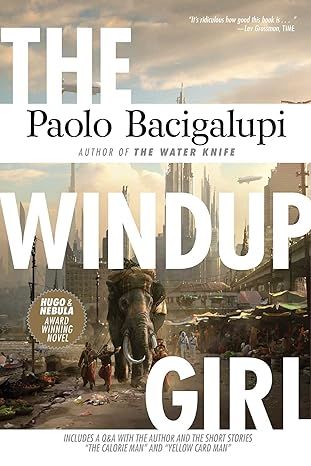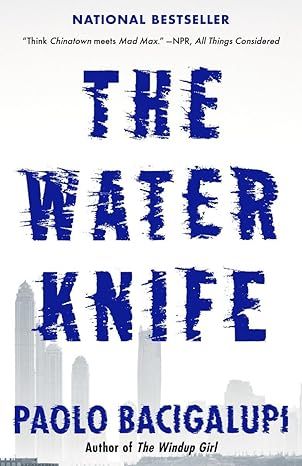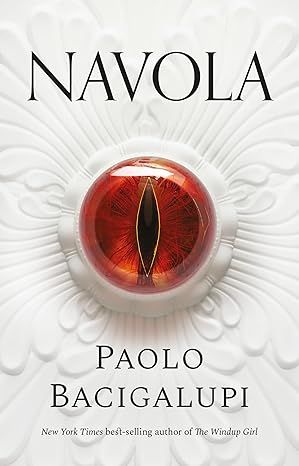The Windup Girl
4.2 out of 5
4,933 global ratings
Winner of the Hugo and Nebula awards for best novel, the break-out science fiction debut featuring additional stories and a Q&A with the author.
Anderson Lake is AgriGen’s Calorie Man, sent to work undercover as a factory manager in Thailand while combing Bangkok’s street markets in search of foodstuffs thought to be extinct, hoping to reap the bounty of history’s lost calories.
Emiko is the Windup Girl, a strange and beautiful creature. Emiko is not human; she is an engineered being, grown and programmed to satisfy the decadent whims of a Kyoto businessman, but now abandoned to the streets of Bangkok. Regarded as soulless beings by some, devils by others, New People are slaves, soldiers, and toys of the rich in this chilling near future in which calorie companies rule the world, the oil age has passed, and the side effects of bio-engineered plagues run rampant across the globe.
What happens when calories become currency? What happens when bio-terrorism becomes a tool for corporate profits and forces mankind to the cusp of post-human evolution? Bacigalupi delivers one of the most highly-acclaimed science fiction novels of the twenty-first century.
In this brand-new edition celebrating the book’s reception into the canon of celebrated modern science fiction, accompanying the text are two novelettes exploring the dystopian world of The Windup Girl, the Theodore Sturgeon Award-winning “The Calorie Man” and “Yellow Card Man.” Also included is an exclusive Q&A with the author describing his writing process, the political climate into which his debut novel was published, and the future of science fiction.
Skyhorse Publishing, under our Night Shade and Talos imprints, is proud to publish a broad range of titles for readers interested in science fiction (space opera, time travel, hard SF, alien invasion, near-future dystopia), fantasy (grimdark, sword and sorcery, contemporary urban fantasy, steampunk, alternative history), and horror (zombies, vampires, and the occult and supernatural), and much more. While not every title we publish becomes a New York Times bestseller, a national bestseller, or a Hugo or Nebula award-winner, we are committed to publishing quality books from a diverse group of authors.
480 pages,
Kindle
Audiobook
Hardcover
Paperback
First published May 4, 2015
ISBN 9781597808217
About the authors
Paolo Bacigalupi
Paolo Bacigalupi’s writing has appeared in WIRED Magazine, Slate, Medium, Salon.com, and High Country News, as well as The Magazine of Fantasy and Science Fiction and Asimov’s Science Fiction Magazine. His short fiction been nominated for three Nebula Awards, four Hugo Awards, and won the Theodore Sturgeon Memorial Award for best science fiction short story of the year. It is collected in PUMP SIX AND OTHER STORIES, a Locus Award winner for Best Collection and also a Best Book of the Year by Publishers Weekly.
His debut novel THE WINDUP GIRL was named by TIME Magazine as one of the ten best novels of 2009, and also won the Hugo, Nebula, Locus, Compton Crook, and John W. Campbell Memorial Awards. Internationally, it has won the Seiun Award (Japan), The Ignotus Award (Spain), The Kurd-Laßwitz-Preis (Germany), and the Grand Prix de l’Imaginaire (France).
His debut young adult novel, SHIP BREAKER, was a Micheal L. Printz Award Winner, and a National Book Award Finalist, and its sequel, THE DROWNED CITIES, was a 2012 Kirkus Reviews Best of YA Book, A 2012 VOYA Perfect Ten Book, and 2012 Los Angeles Times Book Prize Finalist.
He has also written ZOMBIE BASEBALL BEATDOWN for middle-grade children, about zombies, baseball, and, of all things, meatpacking plants. Another novel for teens, THE DOUBT FACTORY, a contemporary thriller about public relations and the product defense industry was a both an Edgar Award and Locus Award Finalist.
Paolo's latest novel for adults is The New York Times Bestseller THE WATER KNIFE, a near-future thriller about climate change and drought in the southwestern United States. A new novel set in the Ship Breaker universe, TOOL OF WAR, will be released in October.
Read more
Reviews
Andrew Liptak
5
A stunning, scary and fantastic debut novel
Reviewed in the United States on October 6, 2009
Verified Purchase
Paolo Bacigalupi's debut novel The Windup Girl is a frightening, realistic and brilliant look at the near future of the world. Taking place in Thailand at some point in the future, Bacigalupi paints a picture of a world that is caught between several major problems: climate change has affected the lives of many people around the world, and in turn, has brought a rise in global agricultural corporations, and global energy resources have been depleted, forcing major changes in the way people live their lives, and how a world-wide economy functions with different resources. Corporations have run amok with trying to maintain their profit margins, and released a number of plagues upon the world that devastated the planet's ecology upon which we all depend, and because of their actions, remain just a single step ahead of the latest mutation of blister rust and other assorted plagues. Thailand is a country that has thus far weathered the storm - the Royal government has maintained a fierce isolationist policy to keep the country from succumbing. As a result, Thailand has a precious resource that western companies desperately want: a genebank, containing thousands of new strains of crops that could be utilized to combat the ongoing struggle against plagues and hunger world-wide.
The story follows several discrete storylines and characters, each with their own motivations and demons. Anderson is a `calorie man', a westerner who ostensibly manages a factory that manufactures kink-springs, a renewable power source. Jaidee is a member of the Environmental Ministry, tasked with maintaining a barrier between Thailand and the rest of the world and the dangers that it poses. Emiko is a windup, a genetically engineered woman, designed by the Japanese for servitude and for sex, who has been abandoned in Thailand and fears that she will be mulched (killed and burned for energy). In addition to these main characters, there are a number of other background characters who are just as complex as their counterparts. In a nut-shell, Anderson has come to Thailand on the behalf of a major Agricorporation that is hoping to gain a foothold in the country in order to obtain rights to the country's gene banks. While he is ostensibly looking for ways to combat the plagues, Thailand officials believe that the corporations have far more sinister and selfish motivations for the gene banks. While in the country, he has to walk a narrow line to stay in the country, as the Environmental Ministry intends to keep Thailand free.
Captain Jaidee is a leading member of the Environmental Ministry, and throughout the book, it is clear that the country is not necessarily unified in its position to remain away from the rest of the world. Limited trade and imports occur through the actions of the Trade Ministry, which is at frightening odds with the Environmental Ministry, to the point where open bloodshed and crimes are committed on both sides to try and force their position upon the rest of the country, which eventually interrupts into violence, which helps to push forward some of the plans that Anderson and others have laid to gain more traction into the country.
Emiko's titular character is somewhere between the various storylines. As an artificial biological construct, she is a representation of what is wrong with the outside world in the eyes of a secular nation that believes heavily in the value of one's soul and rebirth. To the Thai people, she is a soulless being, one who is against nature, and essentially lumped in with the problems of the world. Thus, Emiko, who is unsuited for Thailand's climate with reduced pores (she overheats easily) and a body structure that makes her stutter while moving, which makes her a literal odd woman out, and thus a target to the Environmental Ministry (also known as White Shirts for their uniform) who see her as a threat to the country's independence.
Futuristic worlds are a common element in Science Fiction, but it is very rare to have one that is so deeply realized as Bacugalupi's Thailand, one that takes the current state of existence for the country and extrapolates into the future with hypothetical events. The portrait that he paints of the world is very scary indeed, and the constructed world has reacted accordingly though a number of levels. What makes this novel so interesting is just how everything fits together. There are economic elements that make sense, social, biological and political, all of which are not mere exposition in a prologue in the novel, but where they are an active part of the storyline. This, in a way is one of the best examples of show, don't tell, a writing exercise that I remember from creative writing courses. What is even better (or sobering, depending on how you look at it), this world makes sense. I can see major corporations putting profit ahead of common sense, and I can see the world going to hell in much more vivid detail now. Furthermore, Bacugalupi posits the power struggle between various departments of government, each with their own agendas and motives, both at odds with one another, which trails up through to the very end of the book.
There's a strong look at morality and ethics when it comes to bioengineering and the eventual fate of the species, and how our role fits within a society such as what we see in the future. Emiko, a Windup, is shunned, hated, in reaction to what she was, and what she represented: something highly unnatural. By the same token, there are holes in that sort of feeling, as one character confronts towards the end of the novel. One thing that particularly stuck in my mind was how much of evolution is an unnatural, random occurrence, verses how much of it is conscious decisions that any sort of creature makes that better enhances their chances of survival? In this world, survival is predicated on the work of gene rippers and scientists who remain just a couple of steps against plagues - it is noted that the windups are built for a purpose, and that they are immune to most problems in the world because of their unique design. Like the clashes in the Thailand government, there is a larger struggle at stake, survival, with both sides making valid arguments for their continued existence. In a sense, this story is a look at how the human race might choose to survive, and enter a new stage of development. To me, this is a very profound element to the story.
When all is said and done, there is one big theme that goes through and through with this book: survival. Each element of the book deals with this very issue, from the ultimate survival of the human race in a hostile world, to the immediate survival of several characters who are neck deep in political and economic conspiracy to the various branches of government who want to see their vision of the future for their country to survive the coming turmoil.
What truly stands out for this book is the rich detail and fantastic prose. I've purposely taken my time with this book so that I could absorb as much as I could. What Bacugalupi puts together is a superior story, one of the best science fiction novels that I have read in a long time, one that takes the best from well thought out characters, plausible economics and science and a complicated story.
(Originally posted to my blog)
Read more
95 people found this helpful
M and G
5
23rd-Century Bangkok Faces Bio-Disasters and Political Intrigues
Reviewed in the United States on July 25, 2024
Verified Purchase
This is book #57 in my quest to read every Hugo-winning novel (it's the 2010 winner), and it's probably going to make it into my list of top-ten favorite Hugos. I absolutely LOVED it! As a near-future dystopian commentary on current world affairs with a hefty dose of smart sci-fi (it's apparently a masterwork in the Biopunk subgenre), it scratches the same itch as other all-time favorite books (e.g., World War Z, Red Mars) with the same vibe. Here are my thoughts:
*Brief Synopsis: About two hundred years in the future, the efforts of corporate conglomerates specializing in genetically-engineered food ("Calorie Companies", based in Des Moines) result in terrifying diseases that wipe out the global food supply. Coupled with the effects of global warming, these blights cause a "Contraction" that topple multiple world governments (e.g., the U.S., the EU, and the PRC) and re-establish an age of protectionism in surviving nations. Set entirely in a futuristic Bangkok enriched by a secret seedbank and besieged by rising sea levels constantly threatening to drown the city, this novel details the warring interests of Thailand's ascendant Trade Ministry (and the Calorie Companies desire to break down protectionist barriers) and its less popular Environment Ministry. Anderson Lake, a Calorie Company agent posing as a foreign businessman, wants to leverage his company's militarized resources to access Thailand's seedbank. Hock Seng, Lake's secretary and victim of a Malaysian genocide against the ethnic Chinese diaspora, wants to get back on his feet and reclaim his shipping empire. Captain Jaidee Rojjanasukchai unswervingly pursues his white-knight quest to uphold trade barriers that hold foreign diseases at bay. Kanya Chirathivat, Jaidee's lieutenant, navigates her split loyalties between both powerful ministries. And in their midst a Japanese-manufactured genetically-altered woman named Emiko ("The Windup Girl") seeks to avoid the Environment Ministry (intent on "mulching" her) and break free of her master-pleasing conditioning to find a place where she can live free.
*Unbelievable Worldbuilding: Bacigalupi's glimpse into the 23rd century is so fleshed-out that it's almost tangible. Offhand references to obviously world-changing events abound, like the destruction of Finland's seedbank, the drowning of New York and other global capitals, territory disputes between Southeast Asian nations, the religiously-inspired genocide of the ethnic Chinese, the rise of a "Grahamite"/luddite Christianity, the laboratory creation of new species like "chesires" that wiped out domestic cat populations, and so much more. And this is to say nothing of the highly-involved internecine conflicts taking place within Bangkok itself, with power players including the Palace, the Environment & Trade Ministries, foreign companies, and local crime rulers such as "The Dung Lord." And the rich cultural and religious underpinnings of the book are also strong; there's a particularly cool emphasis on ghosts "phii" that haunt Bangkok's streets, and I love the temples and shrines at the heart of the Environment Ministry's power. I simply couldn't get over the layers upon layers of the book--its world building is absolutely top-tier.
*Strong Intrigue & Palace Politics: I touched on this a little already, but the backroom deals, coup attempts, power plays, hidden weapons caches, sabotage operations, etc. all came together very nicely. The strong political element, combined with the biotech underpinnings, made the book kind of came across as a mix between "Jurassic Park", "Gattaca", and "Game of Thrones." The multiple falls from grace and subsequent resurgence of "face" (especially for Jaidee and the Environment Ministry) keep the plot unpredictable right up to the very last chapter (and, no spoilers here, but what a last chapter it is)!! ("The symbol for the Environment Ministry is the eye of a tortoise, for the long view--the understanding that nothing comes cheap or quickly without a hidden cost.")
*Great Sci-Fi Elements: Along with the politics, this book has science fiction at its core. I get where the word "biopunk" comes from after having read it. Some great elements include: -The world fell because of greedy corporations' genetic tampering that limited each batch of grain to a single use before more would need to be purchased. -Geneticists create entirely new creatures like the aforementioned "chesires", mammoth-like "megodonts", engineered pollinators, and (of course) "windup" humans themselves. -The Contraction's overuse of fossil fuels led toan interesting shift to manual labor (e.g., human-operated radios, computers, elevators, and fans; megodont-powered factory equipment; "kinkspring" generators that store up joules of energy; a return to sailing ships, etc.) -The raging diseases wiped out much of the world's genetic diversity, causing Anderson to marvel over the resurrection of previously-extinct specimens like Thailand's Ngaw fruit. ("Anderson briefly wishes that he could... express his rage at (Expansion humanity) directly, tossing them off his balcony the way they undoubtedly tossed aside fruit that was even the slightest bit bruised. ... (They) had no idea that they (stood) in the front of the treasure of the ages, that they inhabit(ed) the (Garden of) Eden."
*Tight Cast of Central Characters: Bacigalupi avoids the trap of character saturation that so many far-reaching political sci-fi stories fall into. Rather, he presents all fifty chapters through the eyes of his five principal characters (Anderson, Jaidee, Hock Seng, Kanya, and Emiko) and thus gives us a small cast of characters to really care about. All five of them are compelling in their own way; Jaidee and Kanya are both strong hero figures, though I think Anderson's layered intrigues make him particularly cool. It's hard to deny, though, that the egocentric and diabolical Gibbons is probably the most compelling character in the whole book--his appearances are brief but lastingly chilling. ("A fierce intellect. A man who reached the pinnacle of his field. A jealous and competitive man. A man who found his competition too lacking, and so switched sides and joined the Thai Kingdom for the stimulation it might provide. ... We rest in the hands of a fickle god. He plays on our behalf only for entertainment, and he will close his eyes and sleep if we fail to engage his intellect.")
I positively LOVED this book. I highlighted MUCH more of it than I can possibly represent here, effectively discovering that I enjoyed it cover-to-cover. It's a masterpiece of science fiction; I'll read it again and recommend it to many!
Read more
Neil DeWitte
5
The Windup Girl - A Thought-provoking Journey into Humanity's Future
Reviewed in the United States on January 20, 2015
Verified Purchase
The Windup Girl is a captivating story of humanity's struggles in a genetically engineered and corporatized post-oil future.
I am reluctant to write a review of a novel that has hundreds of reviews on Amazon, but I have enjoyed Bacigalupi's "The Windup Girl" so much that I compelled to write. I am also mildly dismayed by the critical reviews of this book; even the harshest reviewers concede praise, but ultimately miss the point, wanting this novel to be something that it isn't (and I'm glad it's not.) This novel challenges the reader not just to imagine, but to think critically about what could happen when humans aren't the center of the universe.
First, this novel completely and utterly captures my imagination. It succeeds on so many levels, most notably a deep thread of moral concern set in against an otherworldly backdrop of a future Thailand where safe calories are hard to come by. The characters are beset by an oppressive environment of tropical heat, genetically-engineered plagues, threatening government officials, greedy corporations and even a rogue mad scientist of genetic engineering. The eponymous character, a genetically engineered quasi-human, is an admixture of subservience and fierce will; she is pivotal to the plot development even though much of the novel does not concern her directly. Bacigalupi's anxiety-provoking prose paints a fantastically vibrant world; each paragraph seems to be written to capture the jaded audiences of modern movies. You can pick this book up and read just about any paragraph and be instantly sucked into the world.
The plot of "The Windup Girl" is good, but admittedly it's not great. To be great, Bacigalupi would have to have written a Victor Hugo-esque confluence of plot elements near the end, resulting in nothing less than a spectacular triumph of a novel. With "The Windup Girl" it doesn't matter that the plot isn't stellar. There is plenty happening in a large story arc that involves every one of the highly memorable characters. The plot is moved forward by each of the character's experiences, which are woven into a big picture that has a few broad heaves back and forth, but nothing stunning. In fact, some of the most potentially shocking plot developments are not dwelled upon, and I think this is done on purpose by the author. For example, readers have complained about a descriptive sex scene and in their next breath complained about a lack of description of the ensuing mass murder scene. It's pretty clear the author wants to emphasize some elements over others. Another multiple Hugo and Nebula-award winning author is known for doing this exact same thing, so if the sparse description of violence doesn't fit present cultural norms that accept violence over sex, the reader might consider this further with some critical thinking.
The primary characters are spectacularly formed the moment they hit the page; but as their stories progress, there is merely minor character development going on; the characters desperately try to cling onto their lives and their souls. In a pressure cooker of a world, they are battling their doubts and weaknesses without undergoing massive character development. Honestly this gives the book a great sense of realism; it's almost as if the characters are pawns in a grand sweep of evolution. What Bacigalupi's characters may lack in personal development is more than made up for by the variety of their background cultures, personalities and motivations. Some are driven by greed, others by fear or doubts. The Windup Girl herself simply tries to stay alive from one day to the next, and that's before things get bad. The renegade scientist, Gibson, is a fantastic character sketch of an exquisitely amoral genius. His conversation with Kanya is highly reminiscent of the conversations between Hannibal Lecter and Clarice Starling from "Silence of the Lambs." Ironically, the greatest hints of humanity in the novel come from the non-human, including not just Emiko, the primary windup, but also the pitiful death of a Megodont and the arresting realizations of a secondary windup girl before her corporate master. In this regard, the novel greatly resembles the movie "Blade Runner."
In the end, "The Windup Girl" is a thinking person's novel set in a richly imagined dystopian future. The dizzying array of religious and cultural symbols along with the biological and technical inventions and the implications of how they got there and what they mean for the present and the future are amazing. The circumstances surrounding the plot developments are something the reader will have to use her imagination to devise. In short, the reader is spared hundreds of pages of being hand-held through the obvious requirements and inevitable consequences around the plot. The second half of the book is much lighter on detail than the first. This could be the result of hurried writing, overzealous editor demands, or perhaps the author held back details, especially concerning Kanya's character, that could be fleshed out in a sequel. Regardless, "The Windup Girl" is a novel of ideas with the main character coming face-to-face with her maker and struggling against unique, yet all-too-familiar, bonds that hold back humanity.
Read more
3 people found this helpful
Glosso
5
Great Book
Reviewed in the United States on April 7, 2024
Verified Purchase
Great science fiction. No space ships. No swords. Just brilliant creativity. Intriguing plot that never ends. Superb characters. Minor characters explored in-depth. Major characters rich with flaws and humanity. Delightful violence. This book, without ridicule or adulation, delves respectfully into the thinking and worship of the devout. It imagines a future that becomes terrifyingly more plausible with each passing day. It explores racism and bigotry with a light touch and deft hand, showing how it feels for both the haters and the hated. It seamlessly ties in sex with the plot and without preaching depicts how sexual abuse brings out the worst in even the gentlest among us. It is a wonderful to read on a phone with eKindle because search engines are just a tap away to learn the meaning of the Thai phrases. And by all means do look them up. This book paints pictures, plays sounds, brews aromas and constructs a world that the reader can see, hear, smell and touch. Each word matters. Highlight, annotate, take notes. Enjoy the rich texture of this book. It will leave you smiling like a cheshire cat.
Read more
Chris White
4
A hard read for me
Reviewed in the United States on June 4, 2024
Verified Purchase
I loved Dune, even though it was a difficult read for me. The author states they were influenced by that book. I found this one a tough read, but I did enjoy it. We read it for a Meetup bookclub I belong to.

Deven Seymour
4
Confusing, but with a nice pay-off at the end
Reviewed in the United States on November 23, 2010
Verified Purchase
The Windup Girl was a difficult novel to read. Not because it took place in the future, with all kinds of futuristic stuff to describe, and futuristic lingo that you have to learn. It's the past that made this a tough nut to crack for me. Specifically, Thailand's past
This novel, taking place in a vague future that could be a thousand years from now, or twenty years away, takes place in the city of Bangkok, or what used to be Bangkok, I'm not sure. The novel goes right into the story, and doesn't belittle the reader with a "catch up," but rather gets right into it, assuming that you'll get the hang of it as you go along. Normally, I like when this is done, such as in A Clockwork Orange, when you are just expected to pick up the local slang in which the novel is written. It allows the reader to be completely immersed into the world that the author has created, making it that much more vivid
In this case of The Windup Girl, Bacigalupi is attempting to immerse the reader into the Thai culture, which in many ways, is more foreign than the frightening future England that Burgess painted in the aforementioned dystopian novel. Many of the pro-words are Thai or Cantonese, and the novel constantly refers back to the past of Thailand, expecting the reader to have a grasp of the history, their gods, their profits, and many, many other references that I had no clue about, making it very difficult to follow the story, since much of the tensions were based on the history of the country.
Now, much of it was based on false history. That is, the history in-between our present day, and the unnamed time in which Bacigalupi's world takes place. But I gathered that much of it was even further back, into our shared (ours and the novel's) history, and with no knowledge of the region's history or culture, I just... didn't get it.
This is the negative beginnings for me of the book, so now let me give it some praise. Despite the difficult (or at least often incomprehensible) read, I hung in there, and what I got was a good story, with very developed characters, who seemed believable in their motivations and their individual quests. Character development is one of Bacigalupi's strong suits, here. The Windup Girl herself, while seemingly not the main character, is none-the-less pivotal, and though she seems pathetic and one-dimensional at first, over the course of the story, more and more depth is added until at the end, you have a character worthy of rooting and hoping for.
You want things to work out for many of the characters in the novel, and in the end, you mostly get just that. The ending, which I won't go into, all clicked together to make it a book worth spending your time on. Should a sequel be written, I hope that it goes further into the Japanese culture only glimpsed in the story. That was the main aspect of the novel that I was interested in, and that's what I'd like to see more of.
Read more
3 people found this helpful
That WendyGirl
4
Excellent sense of atmosphere with an unsatisfying ending
Reviewed in the United States on December 2, 2012
Verified Purchase
I chose to buy The Windup Girl for my Kindle during a recent trip to New York to read while on the train, waiting in coffee shops, etc. based on the fact that it won the 2009 Nebula and tied for the 2010 Hugo awards for best novel. As a fan of well-written scifi, I'd never been disappointed picking reading from the list of award winners, and The Windup Girl continued that trend.
As an American, one of my favorite stylistic decisions that Bacigalupi made was setting the story in Bangkok and making it feel extremely foreign, even beyond the science fiction elements. The story is told from the viewpoints of 4 different characters, only one of which is native Thai, and trying to catch up on the nuances of some of the Thai words as well as understand some of the customs made it feel like this was a truly different world, even without all the changes in technology and economy. Furthermore, Bacigalupi didn't explain in detail what happened to change the world in 200 years - there was no chapter on the history and science. It was never clear exactly what had caused this new world of genetic modifications and rampant plagues, which led to a further sense of being outside my comfort zone. I think it was really effective in creating an atmosphere devoid of surety and confidence, which mimicked the precarious situations the characters found themselves in.
I'm not always a huge fan of telling a story from different viewpoints, but in this case I found it effective and very interesting. Each character approached questions of survival and ethics differently, sometimes referencing cultural or religious beliefs that were different from the other characters' backgrounds. This particular device made Bacigalupi's vision of the future a lot easier to comprehend because the reader can see how different parts of society experience it. Additionally, I think it was very effective in showing that there is little absolute good and evil in the world as none of the characters are truly heroes or villains, except in the eyes of the other characters. This made it clear how different the cultural, political, and economic tensions play out without reading like a dull text book.
(Mild spoiler alert)
My biggest gripe with the book is the ending. I was looking for a resolution - either good or bad - of the relationship between two characters that just didn't happen when one died. At the end I thought a lot of the conflict hadn't be resolved, only put off until the players challenge each other again. This may be exactly what Bacigalupi was going for, an idea that some conflicts never resolve themselves easily and that life is one constant struggle. Regardless, it was emotionally unsatisfying.
In short, I really enjoyed the book and would recommend it highly to anyone who likes science fiction or political intrigue. There are some very graphic descriptions of sexual abuse as well as a lot of violence and racism, so if you would prefer not to read those sorts of things (or have younger people read them), I'd recommend finding a different book to read.
Read more
quietlycurious
4
The Windup Girl- Trends in Science Fiction
Reviewed in the United States on December 16, 2011
Verified Purchase
Science fiction, despite decades of history that stretches the definition of the term and splinters it into subgenres, can still be looked at as a more-or-less coherent whole, and certain overarching trends can be seen within it throughout its history. Paolo Bacigalupi's The Windup Girl exemplifies a number of those trends. Three of them will be explored here: the changing settings commonly used in science fiction, science fiction's complex relationships with the Other, and the use of science fiction as a means of exploring present day problems. Science fiction has always been used as a means of exploring, and the settings sci-fi stories are placed in have traditionally reflected that intent. Often the goal was to in a sense explore the places that were unfamiliar to humanity at large, or the people or situations that might be found there. Stories therefore tended to be set very far away from the familiar- 20,000 leagues under the sea, on the moon, or on worlds that could only be accessed by a blue box capable of traveling in time and in space. As time has passed, however, that has become increasingly less frequently the accepted setting for science fiction. Stories are more often being placed closer to home, often in Earth's present, near-future, or familiar parts of our past. The aforementioned traveling blue box, from the Doctor Who science fiction series, exemplifies that trend: the older doctors were off-planet far more frequently than the current batch, who are busy warding off yearly alien invasions of London. Windup Girl continues this trend, set in a Thailand which is clearly in Earth's not-so-distant future. This trend suggests that as reading audiences have become more sophisticated, we're finding more and more to explore in places closer to home- the differences can be more subtle and still hold power. That impression is reinforced when we notice that Windup Girl, although set on Earth, is set in a country with which most of its readers have little experience. Differences in culture and climate, although probably subtler than differences between planets, are now enough to capture our imaginations. History also tends to suggest that environments that were once wholly alien, ripe for exploration, are now less so: we've been to the moon, and we've been using telescopes and deep-space probes to thoroughly explore celestial bodies further afield for some time now. To find fresh territory, it seems literature must return to the old. Connected to science fiction's response to other cultures is science fiction's response to what might be called the Other, or otherness, where that term refers to living beings different in some respect from ourselves. Human history has struggled to come to terms with the presence of other humans from whom we differ, and that struggle has manifested in conflict of religious, racial, and cultural origins. The mind and being of someone with whom we simply cannot connect, for some reason, is a whole new stage of exploration, and therefore a topic for science fiction. Science fiction's response to the Other has changed a great deal over the years. The initial response is exemplified in "Arena", by Fredric Brown, which features a human and an alien doing battle for the survival of their race. In this portrayal, there is nothing sympathetic about the Other. No name for their species is given; no attempts are made to develop their culture. The alien's body is radically different from ours, round and, in the perception of the human, disgusting. Its mind is similarly repulsive; the human narrator is able to briefly connect with it and finds only raw, inexplicable hatred. For the science fiction this story exemplifies, the human's actions are the right response to the Other: he outwits the monster and kills it, saving his species. A few decades later, Star Trek features exactly the same story with Kirk and an alien. Although in many ways still repulsive, this alien representative of the Other is more sympathetic- its humanoid, and his culture has a name and motives for its actions. Kirk takes the noble approach, sparing his enemy and saving both their cultures. Science-fiction's attitude towards the Other is more moderate. It is tempered still further by the time "43 Anterean Dynasties" was written. In that story, the representative of the Other is also the narrator, and is an intensely sympathetic figure. His culture is well-developed, noble, sophisticated, and oppressed. We are the "aliens" in this story- rude, ignorant, and oppressive. Implicitly, the right response to Otherness in this story would have been to allow the other culture to flourish peaceably beside our own, learning from each other along the way. Since The Windup Girl does not have any aliens, it might be easy to think that it does not deal with Otherness, but this is not truly correct- it approaches the issue of the Other from many different perspectives. Emiko is an Other to everyone else in the book by virtue of being a genetically-modified human; Anderson and Hock Seng are Other to the Taiwanese because they are foreigners. Through them, The Windup Girl furthers science fiction's response to the Other, neither taking the wholly-evil approach of "Arena" nor the wholly-sympathetic response of "43 Anterean Dynasties". Each one of those characters is the narrator at some point it the story, and reasons are given for the reader to sympathize with each of them: Hock Seng has lost everything- family, friends, fortune. Emiko is a lost young woman, abused and taken advantage of, trying to survive. Anderson Lake dies an undeservedly unpleasant death, with only one person to stand by his side. But each is also alien and abhorrent to the reader in various ways. Emiko eventually comes to disregard human life, to the point of sizing up innocents as potential kill targets and, in the end, seeking to replace humanity with genetically superior beings like herself. Hock Seng's attitudes about women and lack of dedication or loyalty to much except keeping himself alive is off-putting. Anderson Lake treats the woman he's involved with (Emiko) quite badly, and is serving a morally questionable company to undermine the national sovereignty of Thailand. In this contrast, The Windup Girl is giving us a truly modern view of those we perceive to be different from ourselves: conflicted feelings of both sympathy and repulsion, and by having a wide variety of characters with that quality, the book illustrates that virtually everyone is conflicted in that fashion- everyone, Other and familiar, has pieces of themselves we can relate to, and pieces we would be repulsed by. Arguably, science fiction's tendency to explore relationships between people who can't quite understand each other is just one part of its broader tradition of studying contemporary social issues and society's fears about the future. Star Trek, again, exemplifies this, taking on Cold War themes in the Federation-Klingon relationship, and tackling racial tension issues in episodes like "Let that Be Your Last Battlefield." Books like Do Robots Dream of Electric Sheep? question what it means to be human. That trend in science fiction shows no sign of declining, and The Windup Girl vigorously takes part. Environmental consequences of choices we're making now define the world in which the story takes place. Transportation and human living conditions have been fundamentally altered by global warming. The prevalence of monoculture crops contributed heavily to the famines that shaped the recent past of the story, and the struggle to recover from the loss of many species is the driving force behind Anderson Lake's part of the plot. The Windup Girl also shows the reader one possible set of results of the genetic technologies we're developing now, and questions the meaning of "human" if we continue to go down this path. Emiko is a genetically modified human. The reader cannot deny her humanity. and yet she is denied basic human rights. The question of how we should culturally and legally handle people such as Emiko in the future is thereby implicitly explored. There are also environmental consequences to our genetic tinkering, like the production of super-capable `foreign' species like the cheshires, which can wipe out native populations. Finally, issues of national identity, racism, and race are also explored. Can Thailand truly be a sovereign nation if it is dependant on another country's companies for continued survival? How do foreigners deal with living in a country that has a strong sense of national identity? The reader is brought in close contact with vicious racism and nationalism run wild in the character of Hock Seng, whose family is killed and life's work is destroyed as a result of those passions. The answer to the questions The Windup Girl asks are not clear, in the story or out of it, but the fact that science fiction will continue to ask them is far more certain.
Read more
2 people found this helpful
Giles Gammage
3
Pop Goes the World
Reviewed in the United States on July 5, 2010
Verified Purchase
Dirigibles. I knew we were in trouble as soon as the story introduced dirigibles. They've become a sort of billboard for an entire class of bloated speculative fiction, an all-too literal metaphor for lardy, lumbering stories flogging thinly-veiled allegories of modern ills--Goodyear blimps for the beard-and-ponytail set. My advice to authors is, you see a zeppelin lumbering into the airspace over one of your stories, show no mercy--shoot that sucker down. Kill your darlings, as Faulkner said. You'll be glad you did.
Mr Bacigalupi's novel has rightly won praise and awards for its original blend of futurism and steampunk, a kind of retro-future that preys on modern fears, but the whole structure is a bit like a dirigible itself--the impressive-looking frame mostly just holds a tub of gas.
"The Windup Girl" is set in Thailand, in a near-future where pretty much every bad thing you're worried about happening, happened. It's a kind of scrapbook of apocalyptic newspaper headlines. Oil and gas have run out, leaving civilization dependent on muscle power and a bit of coal (peak oil fears, check!). Airplanes and cars have gone the way of dinosaurs and mammoths, which is ironic, since thanks to genetic engineering, mammoths ("megadonts", sorry) are back in fashion as a source of muscle. Oh yeah, zeppelins are back in too. Sigh.
Speaking of genetic engineering, geneticists at a "calorie companies", a bunch of evil corporations located in Des Moines for some strange reason, have deliberately created super-parasites and crop blights, to wipe out the world's food sources and make everyone dependent on their genetically-modified (GM) products (GM food fears, check! Large, faceless company fears, check! Fears of Midwestern states, che--wait, what?!).
Genetic engineering ain't all bad though, since it's allowed the Japanese to neatly solve their problem of a declining population without having to rely on any foul-smelling foreigners. They've created "windups", tailor-made test-tube people, smarter, faster and stronger than ordinary folk, but with deliberate built-in weaknesses to stop them taking over the planet, such as the stuttering motion that gives them their nickname.
Emiko is the "Windup Girl" of the title, bred to be a businessman's ideal personal secretary--sexy, multilingual, obedient, and when you're done with her, pop her in the recycling bin. Her last boss didn't want to keep her but didn't have the stomach to mulch her, so she has been abandoned in Bangkok, forced to work in a nightclub where she is continually humiliated as subhuman.
There she meets Anderson Lake, whose name sounds like it should be the title of an accounting firm, ostensibly the owner of a factory manufacturing coiled springs, but actually an agent of the "calorie companies", searching for Thailand's secret source of new foodstuffs. His mission is complicated by his scheming factory foreman, Hock Seng, an ethnic Chinese from Malaysia who barely escaped an Islamic-inspired pogrom against his people (Fears of fundamental Islam, check!).
Mr Bacigalupi's Thailand is filled with bowing and corruption, ladyboys and royalist-popularist tensions, a weird mish-mash that feels cribbed from the introduction to a Lonely Planet guide and the "Asia" section of the Economist magazine. This is symptomatic of the wider problem with the book--once you get past some rather neat ideas that went into building this world, there's not much to keep you there.
The setting is relentlessly grim, and other than Emiko none of the characters is even remotely sympathetic. I enjoyed the book, I'll admit, but I don't think I smiled once the whole time I was reading it. It feels downbeat and didactic, more like a Greenpeace manifesto than a work of fiction. I wonder if Mr Bacigalupi isn't preaching to the converted here, though. I imagine plenty of speculative fiction readers are already composting and bicycling to work and eating locally-grown organic vegetables, or at least wish they did.
The plot, too, feels as thin as a zeppelin's skin, with events floating from point to point without any particular thrust or trajectory. The climax in particular feels just plain false, involving a sudden and near-psychotic change of heart on the part of one character, while the epilogue's note of hope jars against the crushing despair of the rest of the book.
In short, I feel Mr Bacigalupi's imagination and talent for twisting modern fears into future fables is not matched by his skills as a storyteller. I've already noted the lack of humor, or even humanity in his characters. At times, he slides into cliché--just once, I'd like to read about a band of evil misfits and rebels brought to heel by a benevolent faceless corporation, just for the heck of it. I'd read that.
Just so long as you promise not to put any dirigibles in it.
Read more
65 people found this helpful
Jill
3
Science Fiction Analysis of Windup Girl
Reviewed in the United States on December 15, 2011
Verified Purchase
The Windup Girl was a unique story with many twists and turns. Paolo Baciqalupi painted a realistic picture of a future where many of society's current fears have come to life and the characters have to deal with the consequences. The Windup Girl is an interwoven network of stories to give many perspectives and insights into Paolo's story. It is a science fiction novel because the setting is in the future and because one of the main characters is a windup girl who was made by scientists. From recently reading many short science fiction stories that spanned back to the pre-1900s, I feel I am able to analyze The Windup Girl from a broad science fiction perspective. A current science fiction trend that is visible in The Windup Girl is how humans are realizing that we are the root of our own problems and not some external force. This is unique to our time period because from 1940s to the 1960s, science fiction stories had a theme of controlling the uncontrollable. We have changed throughout time and have come to an understanding that we can surmount obstacles that nature gives us, but the creation of new human-made obstacles is scary and new. Chaos is created by humans and seemed to be a new fear that was addressed in Windup Girl. Humans have changed throughout time and have gained control of a lot of things in our world compared to the pre-1900s. We have come so far and become so efficient that a fear of going backwards and losing the organization seems to be a new theme in science fiction. Paolo wrote his story in a way that built up to the inevitable chaos. The characters feared the chaos, contributed to it, and felt the full effects of it when it happened. As a reader, was interesting to witness the changes within the characters. The last theme I noticed from Windup Girl and other current science fiction is how there is less distinction between good and evil. The main characters seem to be more representative of normal humans with less heroism. It's a more realistic and honest approach that acknowledges how all humans are capable of evil and greatness, but rarely are people one or the other; they tend to be a mix of both. New science fiction seems to have bizarre or dangerous circumstances happen to average people who are forced to deal with them. It makes the stories easier to relate to. To me, the Windup Girl had at least two characters who I was debating almost all of the way through the book if they were good or bad. The characters weren't very likable and seemed to be on a different level than humans today. For example, the circumstances had made people tougher and kindness was rare. Kindness seemed to literally be linked to weakness in many character connections. Kind actions were done with internal psychological debate for the characters. Basic human survival instincts had come to the forefront and had regressed to historical stages of competing and searching for food and security. Overall, Paolo did a good job creating characters who fit the dynamic of his story. Historically, science fiction had more elements of super natural or new world experiences compared to the current and likely the future of science fiction. The future of science fiction probably will include more psychological elements and stunning new perspectives at things in our world that already exist. Compared to the past, people are more logical and have been exposed to more experiences and visuals and therefore, science fiction has a whole new audience to please. However, it also seems that the science fiction genre is broadening and there will be more subtypes of science fiction than historically. Windup Girl made me appreciate the free speech that exists today. According to Paolo's futuristic story, free speech may become threatened and dangerous because of a spread of power to multiple organizations that have many followers. There were some major stigmas that were dangerous to talk about or be connected to. Paolo did a good job giving the impression of complicated connections and fears between people. At the same time, his approach made parts of the story and characters confusing and hard to catch onto all of the links between characters and past events. The world created in this book is dangerous, unclean, and not friendly. The story seemed kind of dark and without hope. The characters weren't evil, but the world humans had created seemed to have taken on a presence of its own that seemed dark and dangerous. It didn't seem like any of the leaders of the different organizations seemed to have more power than the rest. It seemed like society was hard to manipulate because of the complexity of it. Some individuals had more power and confidence, but they still faced the pain and sorrow that the rest of society faced. I liked how the wind-up girl, Emiko, had very human thoughts and was very aware of how she was made. She seemed to be trapped in a body that could kill her because if she got too hot and could get her killed by others if her jerky movements gave her away in front of the wrong person. Her feelings of being trapped is probably similar to how many people feel today who have to face a disease, obesity, paralysis, or missing limbs. The windup girl fit the role of the "underdog" that everyone was hoping would escape her prosecution. Emiko was my favorite character and Paolo did a good job keeping her story line interesting Overall, I enjoyed reading Windup Girl. However, I felt the beginning was boring and didn't catch my attention. I didn't like how Paolo used names he made up for different objects or historical happenings and didn't explain them to the reader. Reading this book felt more like work than the average book I would pick for myself. It is very thought provoking, interesting, and at some points brought out strong emotions. I would recommend it to others who can handle a slow beginning and are interested in reading a book with a lot of depth and creative ideas about the future
Read more
Top Paolo Bacigalupi titles
Best Sellers
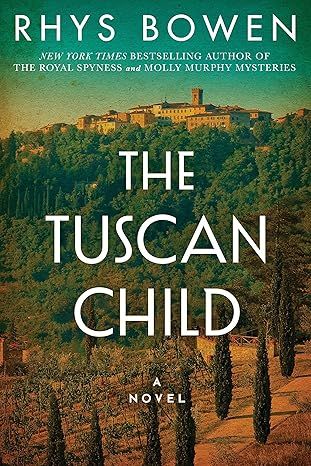
The Tuscan Child
4.2
-
100,022
$8.39
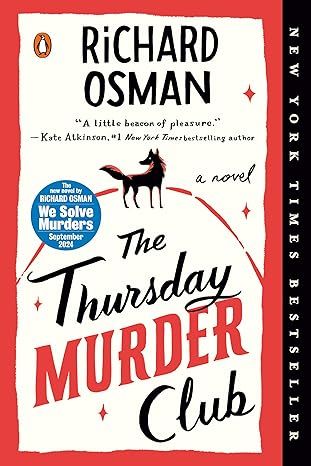
The Thursday Murder Club: A Novel (A Thursday Murder Club Mystery)
4.3
-
155,575
$6.33
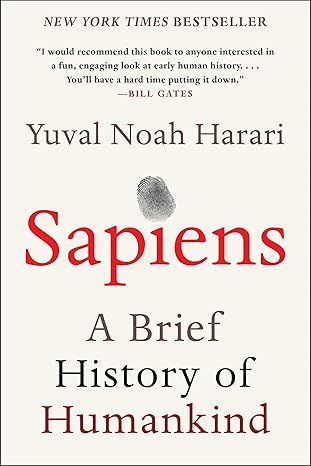
Sapiens: A Brief History of Humankind
4.6
-
140,302
$13.49
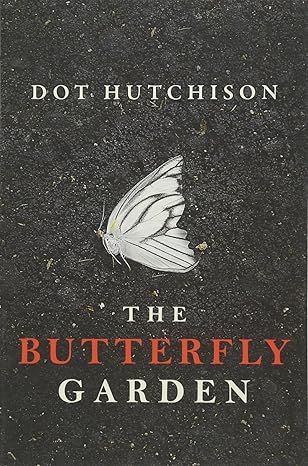
The Butterfly Garden (The Collector, 1)
4.3
-
88,556
$9.59
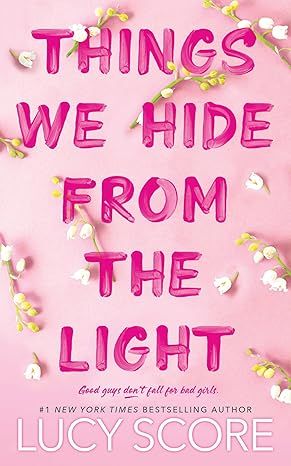
Things We Hide from the Light (Knockemout Series, 2)
4.4
-
94,890
$11.66
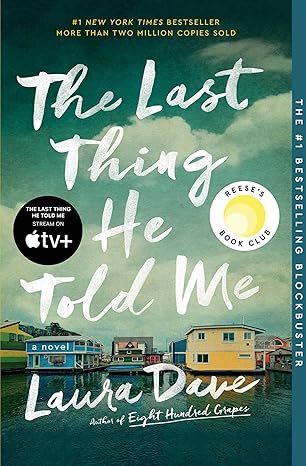
The Last Thing He Told Me: A Novel
4.3
-
154,085
$2.99

The Perfect Marriage: A Completely Gripping Psychological Suspense
4.3
-
143,196
$9.47
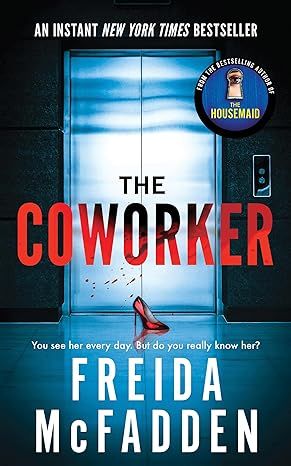
The Coworker
4.1
-
80,003
$13.48

First Lie Wins: A Novel (Random House Large Print)
4.3
-
54,062
$14.99

Mile High (Windy City Series Book 1)
4.4
-
59,745
$16.19

Layla
4.2
-
107,613
$8.99
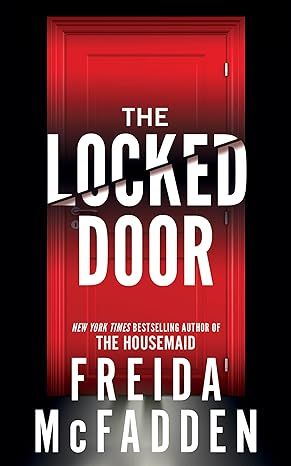
The Locked Door
4.4
-
94,673
$8.53
